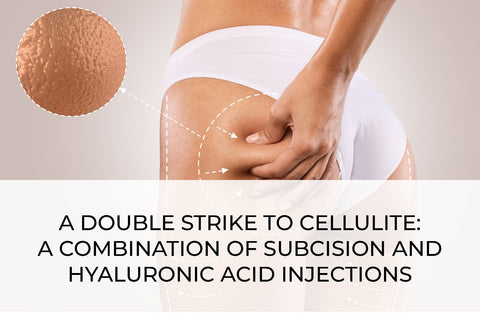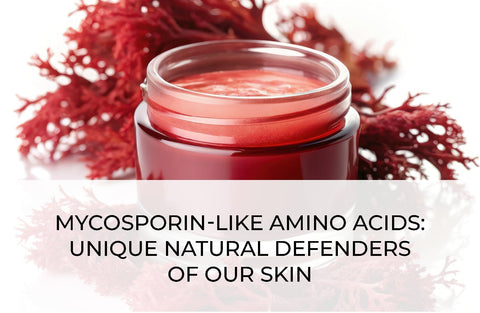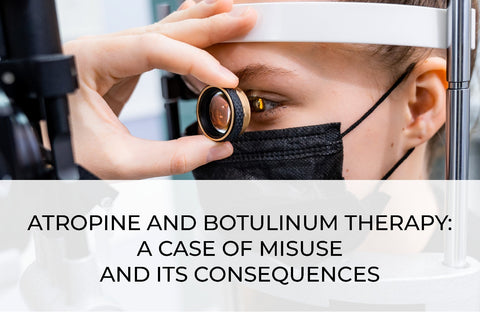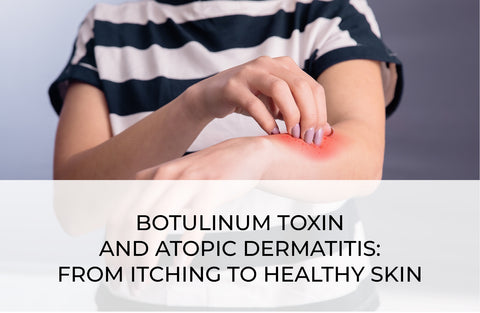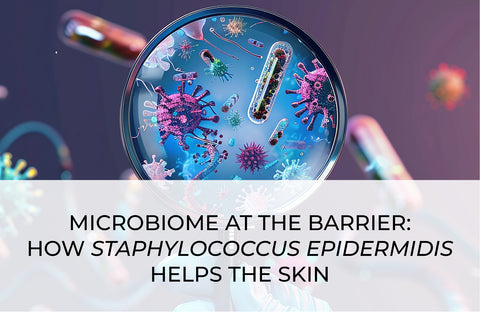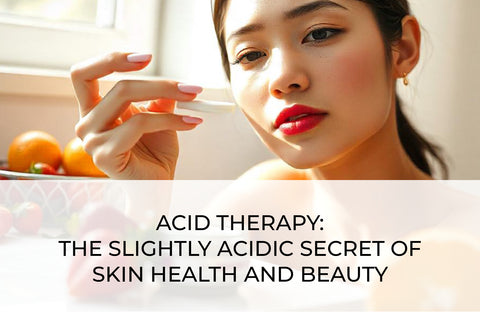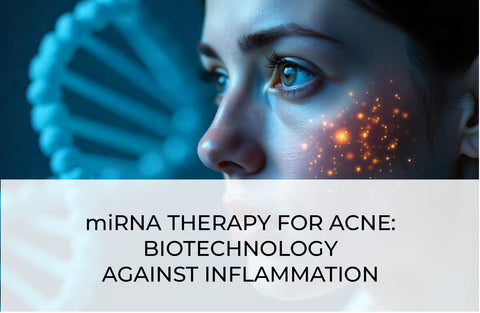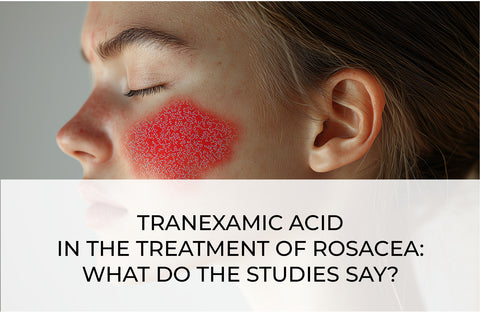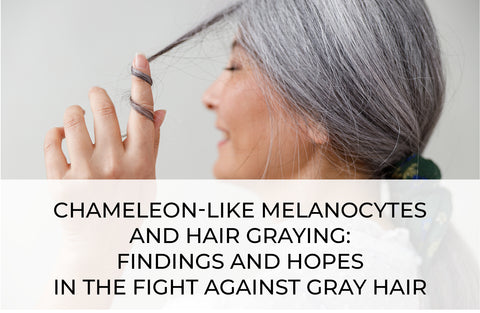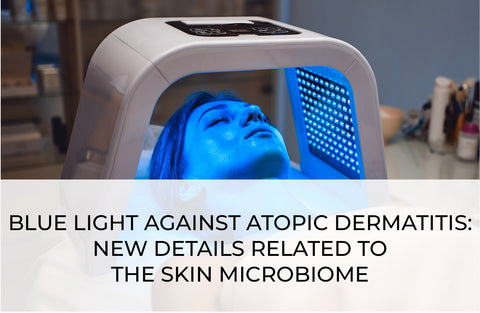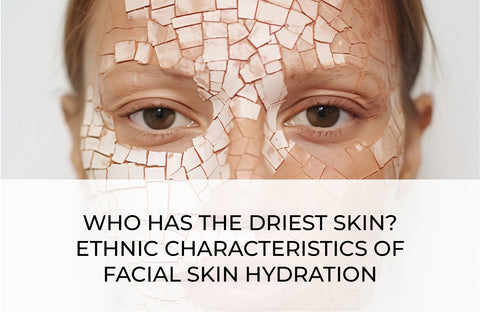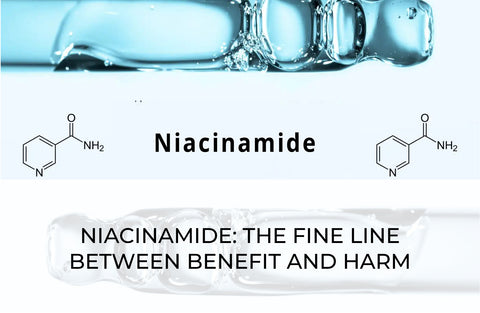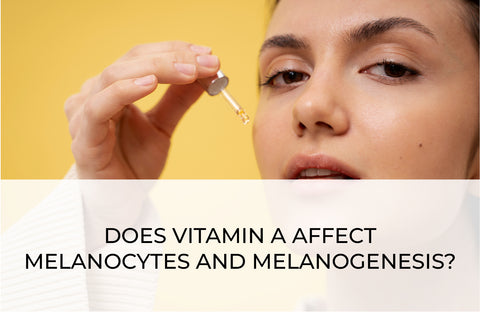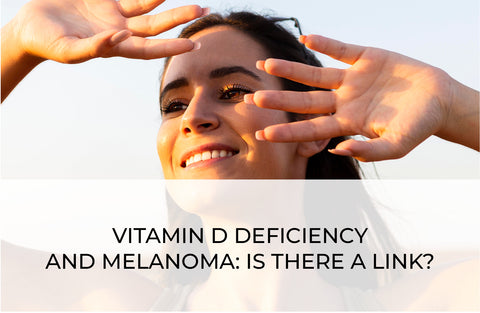ACID THERAPY: THE SLIGHTLY ACIDIC SECRET OF SKIN HEALTH AND BEAUTY

The role of pH for skin health
Enzymes of the stratum corneum, such as serine proteases and ceramidases, are active at specific pH values. These enzymes regulate the processes of keratinization and exfoliation, which promote skin renewal and maintain skin smoothness and elasticity [1]. pH also affects the skin microbiome's activity, including beneficial bacteria such as Staphylococcus epidermidis and Cutibacterium acnes. A slightly acidic environment prevents the overgrowth of pathogens such as Staphylococcus aureus, which can cause inflammatory diseases, including atopic dermatitis and acne [2].
Mechanisms of skin pH maintenance
The skin has its mechanisms for maintaining acidity. These include:
- Free fatty acids in the hydrolipid mantle are formed by the breakdown of sebum triglycerides by enzymes of bacteria living in the ducts of the sebaceous glands.
- Production of sweat containing lactic acid and amino acids. Some of these substances remain part of the hydrolipidic mantle, while the stratum corneum absorbs others.
- Activation of sodium/hydrogen exchangers (NHE1) that regulate the pH gradient across the stratum corneum [3].
The pH gradient varies through the thickness of the stratum corneum, from more acidic at the surface (pH around 5) to neutral and slightly alkaline (pH 7-7.2) in its deep layers. This gradient supports keratinocyte differentiation and lipid barrier formation.
Changes in skin pH: causes and consequences
Various factors can disturb the pH of the skin. Among them:
- Use of alkaline soaps and cleansers.
- Exposure to contaminated environments.
- Chronic dermatologic diseases such as atopic dermatitis and acne.
Changes in the pH gradient alter the activity of stratum corneum enzymes, disrupting the lipid barrier and increasing transepidermal water loss (TEWL). This creates conditions for activating inflammatory processes and increasing infection susceptibility [4].
The concept of topical acid therapy
Topical acid therapy is an approach to skincare aimed at acidifying the skin surface using special products. It maintains physiological pH values, which helps to restore barrier function and reduce inflammation.
Topical products containing organic acids (lactic acid, citric acid, malic acid), or acid-forming components (amino acids, buffer systems) help regulate skin pH. They:
- Enhance the activity of the enzymes of the stratum corneum.
- Keep the microbiome in a state of equilibrium.
- Restore the skin's barrier function, preventing moisture loss [5].
Ingredients and formulations for acid therapy
Modern acid therapy products include a variety of ingredients that help acidify the skin and improve its condition. These include:
- Organic acids: lactic, glycolic, malic, and citric acids, which have a mild exfoliating effect and improve skin texture.
- Acid-forming components: amino acids such as glutamic acid and asparagic acid, which support natural acidity.
- Buffering systems: citrates and phosphates to ensure a stable acidified pH of the product both inside the package and after application to the skin surface.
- Emollients and moisturizers: panthenol, glycerin, and hyaluronic acid, which prevent excessive moisture loss.
These ingredients are used in creams, lotions, serums and cleansers designed for different skin types and specific dermatologic concerns.
Application of acid therapy in dermatology
Atopic dermatitis
Studies show that skin pH increases in patients with atopic dermatitis, which contributes to the activation of pathogenic microflora and inflammation. Using low-acid creams and emollients improves skin condition, reduces the severity of symptoms, and increases the effectiveness of medical treatment [6].
Acne
Acidic agents have antiseptic and keratolytic properties, effectively treating acne. Lowering the skin's pH reduces Cutibacterium acnes activity and follicle inflammation [7].
Other diseases
Acid therapy is also promising in treating rosacea, ichthyosis, and seborrheic dermatitis. In these cases, acidifying agents help to restore the barrier and reduce irritation.
Research and perspectives
Scientific studies confirm the effectiveness of acid therapy. Choi EH and Kang H (2024) noted that restoring skin acidity improves skin barrier function and reduces inflammation in eczematous diseases [1].
A study by Voegeli and colleagues (2009) showed that maintaining a slightly acidic skin pH prevents deterioration of barrier function and increases resistance to external damage [8].
Another study by Yosipovitch and Maibach (1996) emphasizes the importance of acidity in regulating the microbiome and preventing chronic skin diseases [9].
Prospects for applying acid therapy are associated with developing new products with individual selection of acidity for different skin types and diseases. An important direction is also the study of the interaction of acids with the skin microbiome and the long-term effect on barrier functions.
Conclusion
Acid therapy is a promising approach for skincare and treating several dermatologic diseases. Maintaining the skin's physiological pH level helps restore its barrier functions, regulate the microbiome, and reduce inflammation. Developing new topical agents based on the principles of acid therapy opens vast opportunities in cosmetology and dermatology.
References
- Choi E.H., Kang H. Importance of stratum corneum acidification to restore skin barrier function in eczematous diseases. Ann Dermatol. 2024; 36(1): 1–8.
- Elias P.M., Feingold K.R. Skin barrier. New York: Taylor & Francis; 2006.
- Hachem J.P., Crumrine D., Fluhr J. et al. pH directly regulates epidermal permeability barrier homeostasis and stratum corneum integrity. J Invest Dermatol. 2003; 121(2): 345–353.
- Proksch E., Brandner J.M., Jensen JM. The skin: an indispensable barrier. Exp Dermatol. 2008; 17(12): 1063–1072.
- Fluhr J.W., Darlenski R., Lachmann N. et al. Infant epidermal skin physiology: adaptation after birth. Br J Dermatol. 2010; 162(3): 483–490.
- Danby S.G., Cork M.J. The skin barrier in atopic dermatitis. Curr Opin Allergy Clin Immunol. 2010; 10(5): 452–458.
- Ganceviciene R., Zouboulis C.C. Acne and pH of the skin. Curr Probl Dermatol. 2018; 54: 111–119.
- Voegeli R., Rawlings A.V., Breternitz M. et al. Increased stratum corneum pH impairs epidermal barrier function. J Invest Dermatol. 2009; 129(2): 375–377.
- Yosipovitch G., Maibach H.I. Skin surface pH: pathophysiology and new insights into skin disorders. Acta Derm Venereol. 1996; 6(3): 199–205.


